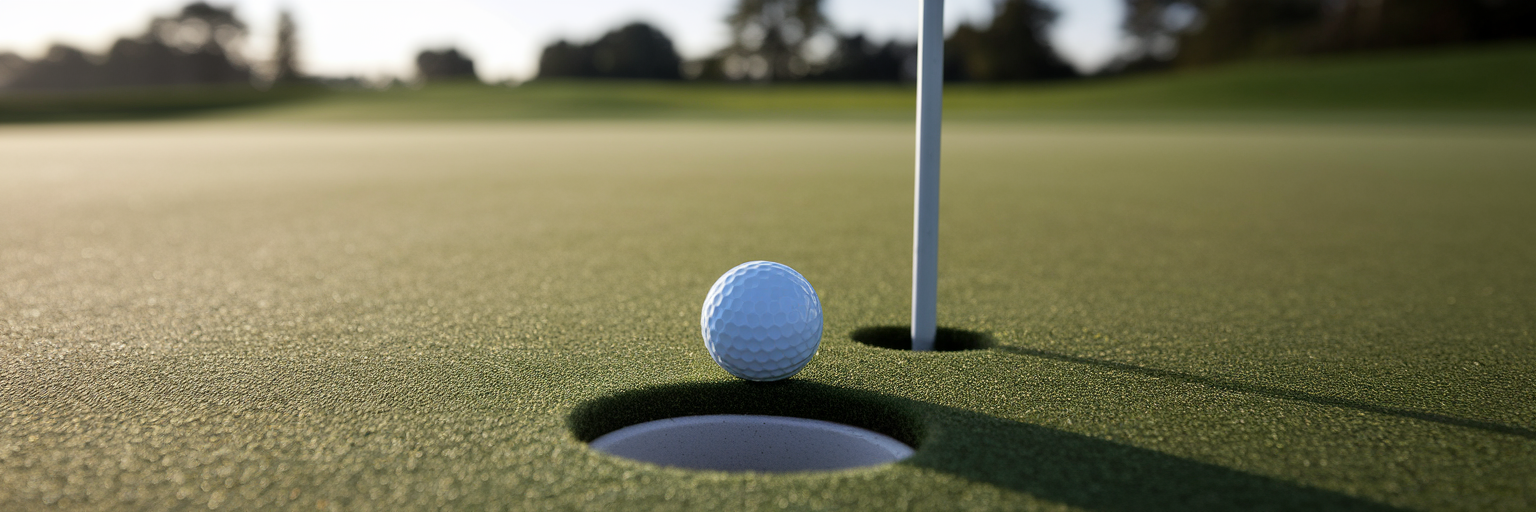Building Confidence on the Golf Course for Beginners
Embracing the Beginner's Journey in Golf
Think about the first time you tried to ride a bike or learn a new language. Every expert was once a novice, feeling a mix of excitement and uncertainty. Golf is no different. That feeling of standing over the ball, wondering if you will even make contact, is completely normal. This guide is here to offer clear, supportive strategies for building genuine confidence on the course. It is not about having natural talent, but about developing a skill through smart preparation and a healthy mindset.
We will explore practical ways to manage your thoughts, practice with purpose, and prepare for your rounds. These steps are designed to make your experience more enjoyable from the very beginning. Learning how to play golf should be a rewarding journey, not a stressful test. Let’s get started.
Mastering Your Mental Game from the Start
Before you even swing a club, your biggest challenge is often internal. The golf mental game for beginners is about managing expectations and staying positive. Instead of letting frustration take over after a bad shot, you can learn to use your mind as your most valuable piece of equipment. This is the foundation for overcoming golf anxiety and building a resilient mindset that serves you on and off the course.
Set Small, Achievable Goals
Forget about hitting a perfect 250-yard drive for now. Confidence is built on small, consistent wins. Before you practice or play, set a simple, measurable goal. This could be making solid contact on five consecutive shots at the driving range or getting just one chip shot to land on the green. When you achieve these mini-milestones, you create positive momentum that makes the next shot feel less intimidating.
Adopt a Growth Mindset
It is easy to fall into the trap of thinking, "I am just not good at putting." This is a fixed mindset. A growth mindset reframes that thought to, "What can I learn from that missed putt?" Every shot, good or bad, is a piece of feedback. See mistakes not as failures but as opportunities to adjust your grip, stance, or alignment. This simple shift in perspective turns frustration into productive learning.
Use Visualization to Build a Positive Blueprint
Top athletes do this all the time, and you can too. Before you take a shot, take a moment to close your eyes and mentally rehearse a successful outcome. Picture the smooth motion of your swing, the crisp sound of the club hitting the ball, and the ball flying exactly where you want it to go. This mental practice helps train your brain and body to work together, creating a positive blueprint for success.
Developing Skills with Purposeful Practice
Walking up to the driving range and hitting a bucket of balls without a plan can feel aimless. To build real skill and confidence, your practice needs a purpose. This means focusing on quality over quantity. These beginner golf tips are designed to make your practice sessions productive and rewarding, turning effort into tangible progress.
Focus on One Skill at a Time
Trying to fix your drive, chipping, and putting all in one session is a recipe for frustration. Instead, dedicate each practice session to a single aspect of your game. One day, you might work only on your putting stroke. The next, you could focus entirely on making solid contact with your 7-iron. This focused approach allows you to see noticeable improvement in one area, which is a powerful confidence booster.
Prioritize the Short Game
Many beginners are obsessed with hitting the driver as far as possible. However, the fastest way to lower your scores and feel more competent is by improving your short game. This includes chipping, pitching, and putting. Since a large portion of your shots in a round happen within 100 yards of the hole, getting comfortable in this area will have an immediate impact on your performance and your confidence.
Create a Structured Practice Routine
A structured plan turns practice from a chore into a goal-oriented activity. Having a clear objective for each session helps you stay motivated and track your progress. Simple tools like alignment sticks can provide instant feedback on your aim, helping you build good habits from the start. Below is a sample plan to give your practice sessions direction.
| Day | Focus Area | Duration | Goal |
|---|---|---|---|
| Session 1 | Putting | 30 Minutes | Make 10 consecutive putts from 3 feet. |
| Session 2 | Chipping | 30 Minutes | Get 5 out of 10 chips within a 6-foot circle of the hole. |
| Session 3 | Full Swing (Irons) | 45 Minutes | Make solid contact on 70% of shots with a 7-iron. |
| Session 4 | Full Swing (Driver) | 45 Minutes | Focus on balance and tempo, not distance. Aim for a consistent swing. |
Preparing Your Body and Your Equipment
Confidence on the golf course starts before you even step onto the first tee. How you prepare your body and what you wear can have a surprising impact on your mental state. When you feel prepared, you are less likely to be distracted by discomfort or self-consciousness, allowing you to focus on your game. This preparation is key to feeling confident on the golf course from the moment you arrive.
Warm Up for a Confident First Tee Shot
Jumping out of the car and immediately swinging a driver is a common mistake that leads to poor shots and potential injury. A proper warm-up prepares your body for the rotational movements of the golf swing. Spend five to ten minutes doing dynamic stretches like torso twists, leg swings, and shoulder circles. This activates your muscles, improves flexibility, and helps you start the round with a smooth, controlled swing.
Dress the Part to Feel the Part
You do not need expensive designer brands, but wearing appropriate and comfortable golf attire helps you feel like you belong. A collared shirt, comfortable trousers or shorts, and proper golf shoes can reduce social anxiety and help you blend in. When you look the part, you are one step closer to feeling the part. This small detail removes a potential source of self-doubt, letting you focus on your shots.
Fuel Your Mind and Body for Peak Performance
Golf is a mental marathon, and your brain needs fuel to stay sharp. Dehydration or low blood sugar can lead to poor decision-making and a loss of focus, especially on the back nine. Pack a water bottle and sip it regularly throughout your round. Bring a healthy snack like a banana, nuts, or a granola bar to maintain your energy levels. A well-fueled body supports a confident mind.
Creating a Positive On-Course Experience
The environment you play in can either build you up or add to your stress. As a beginner, it is important to control what you can to make your time on the course as enjoyable as possible. The goal is to create a low-pressure atmosphere where you can focus on learning and having fun. This is a practical approach to how to build golf confidence in a real-world setting.
Start by choosing your playing partners wisely. Play with friends who are supportive and patient, not overly competitive. A good partner will encourage you after a bad shot, not criticize you. You can also consider playing your first few rounds without keeping score. This removes the pressure of performance and allows you to simply enjoy the experience of being outdoors and hitting the ball.
Learning a few basic rules and etiquette points will also eliminate the fear of "doing something wrong." Knowing these simple courtesies helps you feel more comfortable and respectful on the course.
- Wait until it is your turn to hit.
- Stand still and quiet while others are swinging.
- Know how to mark your ball on the green.
- Play at a reasonable pace to keep up with the group ahead.
Finally, consider starting on a par-3 or executive course. These shorter, less demanding layouts are perfect for beginners. They offer more opportunities for successful shots, like hitting a green in regulation or making a par, which are powerful confidence builders.
Your Path to Becoming a Confident Golfer
Building confidence in golf is a process built on several key pillars. It starts with a growth mindset that turns mistakes into lessons. It continues with purposeful practice that develops real skills you can rely on. It is supported by thorough preparation that gets your mind and body ready to play. Finally, it thrives in a positive on-course environment that minimizes pressure.
Remember that every great golfer was once a beginner, learning one swing at a time. Be patient with yourself and celebrate your progress along the way. As you continue to learn how to play golf, your confidence will grow with every solid shot and every enjoyable round.






